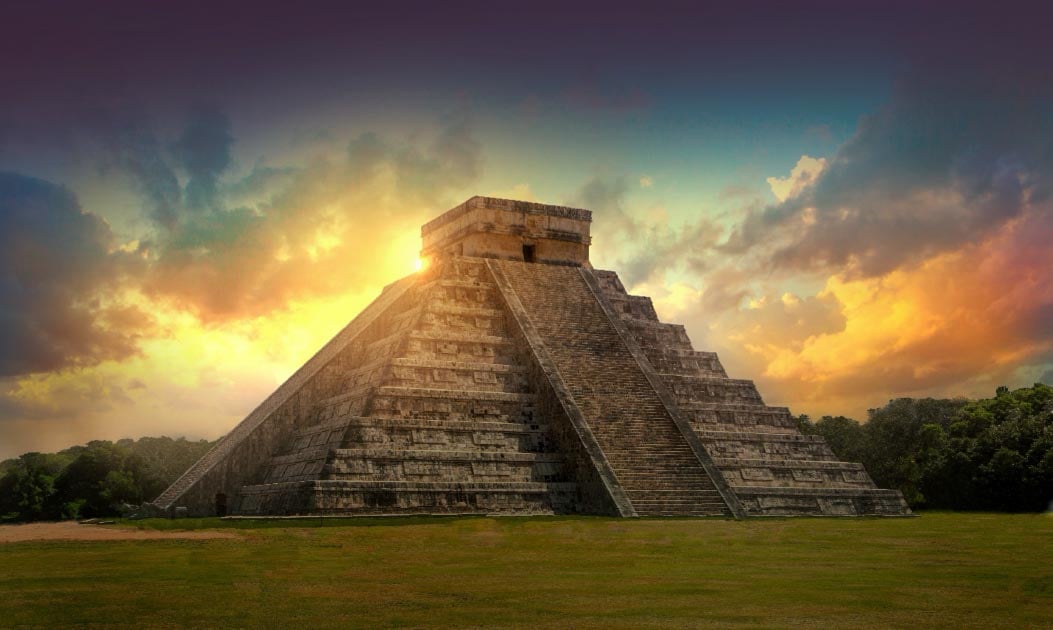Chichén Itzá is At least 400 Years Older Than Believed
The world-famous ancient Maya city of Chichén Itzá, with its sprawling ruins shadowed by its steep iconic pyramid was founded at least 400 years earlier than previously thought.
Dr Guillermo de Anda is an underwater archaeologist and head of the Great Maya Aquifer (GAM) project, that explores and maps cenotes, or sacred sinkholes, on the Yucatán peninsula. The professor has told reporters at the Spanish daily newspaper Milenio that the ancient city of Chichén Itzá was not founded in 525 AD, as currently believed, but about 100 AD, which rewrites this period of Mexico’s history.
Putting the Location in Context
Chichén Itzá is a ruined ancient Maya city occupying an area of about 4 square miles (10 square km) in south-central Yucatán state, Mexico, 90 miles (150 km) east-northeast of Uxmal and 75 miles (120 km) east-southeast of the modern city of Mérida. Being located in an arid region of Mexico, the city’s only source of water was from wells (cenotes) formed by sinkholes in limestone formations.

Cenote cave lake landscape view, Chichén Itza, Mexico. (Martin M303 / Adobe stock)
It was only because of the presence of two enormous cenotes at Chichén Itzá that the location became suitable to build the city, and these sinkholes gave the city its name, from chi (“mouths”), chen (“wells”), and Itzá, the name of the Maya tribe that settled there. In 1988 Chichén Itzá was designated a UNESCO World Heritage site, and today Dr de Anda told Milenio that his team of underwater archaeologists have carefully studied “carbon remains found in the Balamkanché cave,” which was found in the 1950s beneath the Yucatán state archaeological site. He stated that his archaeologists have drawn their challenging conclusions based on “material artifacts” that were analyzed to determine their age.
De Anda described studying the Yucatán peninsula aquifer, and especially water tables beneath Chichén Itzá, as “fascinating.” According to Mexico News Daily, the new foundation date and hypothesis for Chichén Itzá was further analyzed at the First Maya Aquifer Archaeology Colloquium, which was held at the Chapultepec Castle in Mexico City on November 20 th of this year.
- Advanced Engineering Discovered at the Maya Observatory at Chichen Itza
- A Rogue Archaeologist, Atlantis, and the Chac-Mool
- Artifacts Found In Rediscovered Sacred Cave Could Change Our Understanding of the Maya
Rewriting Mexican Maya History
Only in March this year, the same team of GAM archaeologists announced their discovery of an “extraordinary trove of well-preserved Maya artifacts,” under the ancient city of Chichén Itzá in a cave system known as Balamkú or “cave of the jaguar god.” This is located less than two miles from the famed pyramid, known as the Temple of Kukulkan, or The Castle, which sits central in the ancient city.

The archaeologist Guillermo de Anda next to the artifacts found in the Balamkú cave at the Maya ruins of Chichén Itzá. (Karla Ortega / GAM)
At the time, Dr de Anda told The New York Times that his team had found an altar in Balamkú, where it had been determined that there were no burials, but they found and documented “human bone fragments,” which were suspected of belonging to funeral rituals or human sacrifices. Speaking of both Balamkanché and Balamkú at Chichén Itzá, the head archaeologists said they were “two very important places.”
Underwater 3D Mapping
In 2018, a Mexico News Daily article reported that the GAM team, consisting of archaeologists, biologists, underwater photographers and cave divers, discovered an underwater link between two systems of flooded caverns in Quintana Roo, that together form the world’s “largest underwater cave.” According to Mr. de Anda, this discovery inspired his researchers to develop new models of cave archaeology using 3D mapping and modelling techniques.

Divers in the underwater cave in Quintana Roo. (Herbert Meyrl / GAM)
The project’s co-director, James Brady, a Maya archaeologist at California State University, Los Angeles, said these discoveries were “the most significant discovery” in the area since the actual Balamkanché was found in the 1950s. In a phone interview with The New York Times, Dr. Brady said that the artifacts at Balamkanché, many of which are similar to those found at Balamkú, were not closely studied because of a rush to develop the cave into a tourist site, but that these findings indicated that subterranean spaces were more “central to life in Chichén Itzá than previously recognized.”
And it was these artefacts that have now been dated to 100 AD, resetting the clock on when the first Itzá people ventured into the area and identified the two cenotes as the perfect foundation for what would become one of the most extensive and powerful civilizations in South American history.
Top image: Pyramid Kukulkan, Chichén Itza, Mexico, Maya archeological site. Source: IRStone / Adobe Stock
By Ashley Cowie



















